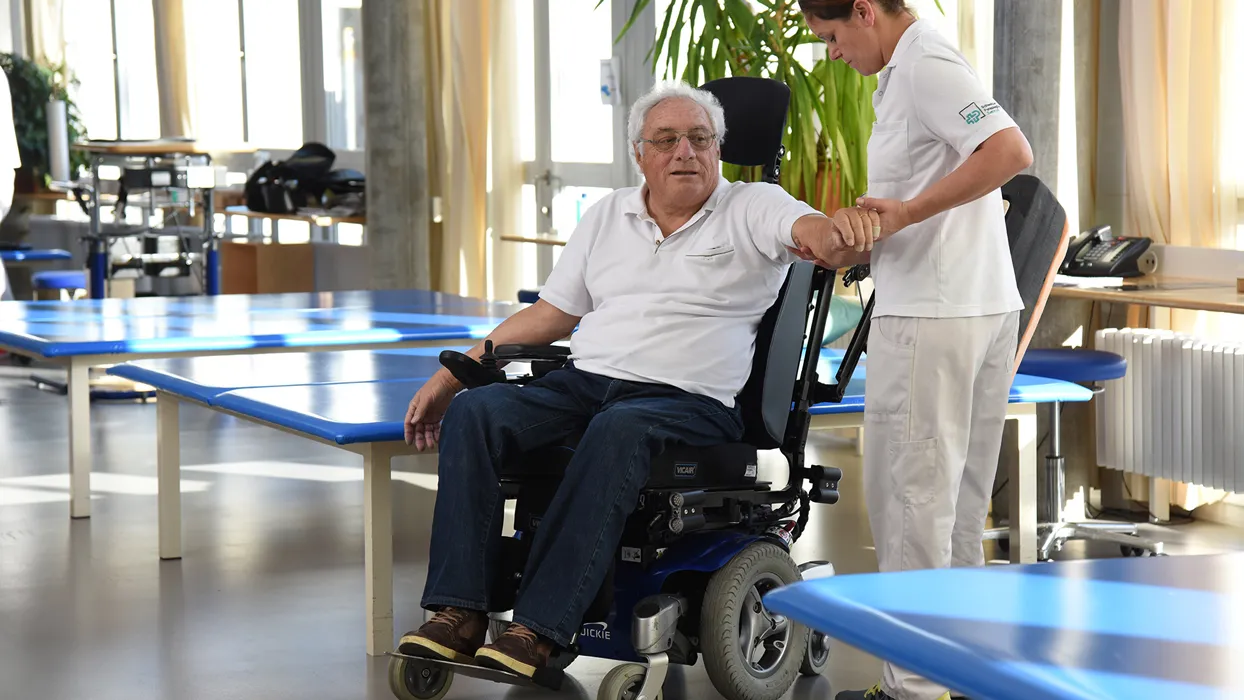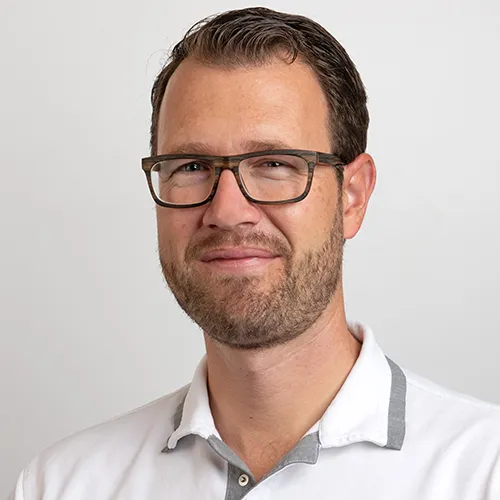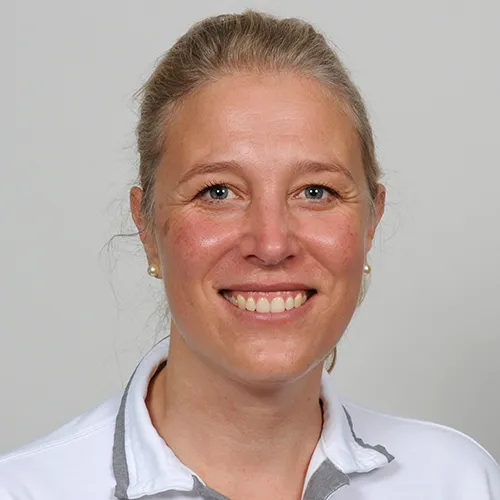

Physiotherapy is a special type of training for people with limited capacities with regard to bodily functions and movement. The goal of physiotherapy is to restore, improve and sustain a body’s ability to move and function following an injury or physically debilitating event, and thus help patients attain the highest possible degree of autonomy in their everyday affairs.
Interdisciplinary teams
Our physiotherapy team is comprised of around 60 qualified physiotherapists A team which has many years of experience in complementary therapies offers a wide range of additional forms of treatment in order to ensure a comprehensive range of treatment options. In addition, assistants also support our work on the patient.
We work in interdisciplinary teams and support patients with traumatic and illness-related spinal cord injury, both in the inpatient and outpatient sector. Our objective is to achieve the greatest possible restoration of independence and mobility, in order to enable a return to the sociocultural environment.
Our training offering includes spaces for prospective physiotherapists. It is also possible to complete the mandatory pre-study internship for physiotherapy school with us. If you have an enquiry, please feel free to contact us using the details below.
Our patients
In addition to traumatic or illness-related spinal cord injuries, we also treat patients with other neurological diseases, post-spinal cord surgery patients, and patients being weaned from a ventilator.
The objective is also to achieve the greatest possible autonomy for the affected individuals. This requires tailored treatment concepts in order to unlock the existing potential for regeneration as best possible. The selection of methods in this respect is subject to constant adaptation and is aligned with the latest findings in neurorehabilitation. In this way, treatment strategies in different phases of rehabilitation are also specifically adapted for each individual patient.
We ensure high-quality follow-up care by carrying out regular checks after patients’ time with us.

Physiotherapy at the Swiss Paraplegic Centre
What we offer
Professional groups
To aid quality assurance and enable the implementation of new evidence-based knowledge in our treatments, our therapy area includes specialist groups with the following focus areas:
Information
Our specialists

Pirmin Oberson

Jessica Decker
Contact

Physiotherapy Administration
Administration office hours
Monday to Thursday:
8 am to midday
1.30 pm to 5 pm
Friday:
8 am to midday
1.30 pm to 4 pm
Downloads
You may also be interested in
Werden Sie jetzt Mitglied und erhalten Sie im Ernstfall 250 000 Franken.
Spenden Sie jetzt und unterstützen Sie unsere Projekte zugunsten von Querschnittgelähmten.
